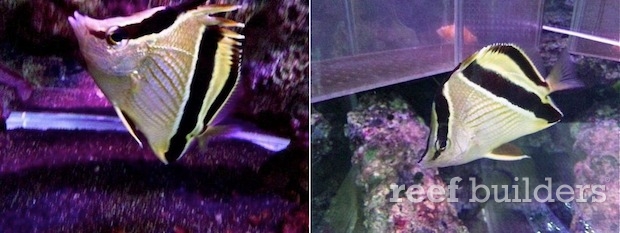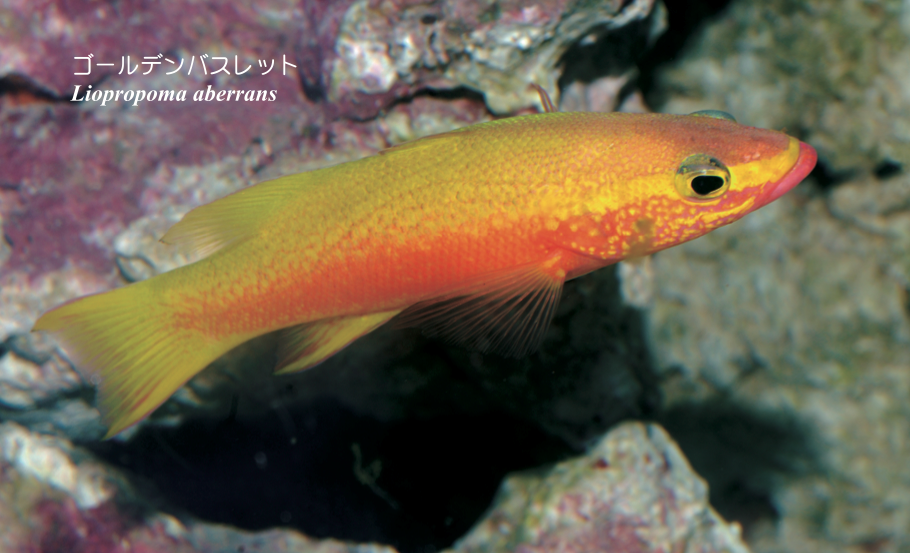We are closing this year with one last travel story and it’s contributed again by rare fish expert Digiman from Singapore. Following up on his Hong Kong trip, Digiman visited Japan as a final pit stop to his year end holiday, and no rare fish aficionado will tick off Osaka in their travel itinerary. Osaka is home to BlueHarbor, and in this recap we take a look at the iconic shop, and revisit Koji’s customer again – the doctor with the out of this world collection.

BlueHarbor is brimming with baby clarion angelfish and baby wrought irons right now. Those two aside, the shop is also stocked with tons of other rare fish shown in the video below. To get an idea on what the shop itself looks and feels like, a reminder can be found in our own BlueHarbor travelogue in 2012.
[youtube]http://www.youtube.com/watch?v=DaoDlFfgzWM[/youtube]
Since Digiman does not have a proper camera on hand, he took the effort the record down everything in video. In the above video, it showcases the lower first floor of BlueHarbor, where the regular fare fishes are for sale. Regular fare by Koji’s standards anyway, and we see fishes like Pomacanthus rhomboides, Holacanthus clarionensis, Liopropoma carmabi, Bodianus sanguineus, Odontanthias fuscipinnis, Apolemichthys arcuatus etc. Take the time to watch the clip in its entirety, and imagine yourself walking through the shop. Keep your eyes peeled for a very special wrasse that shares the tank with a large Chelmon marginalis. It is Suezichthys gracilis, an unusual japanese endemic labrid from a lesser known genus.
[youtube]http://www.youtube.com/watch?v=UlB9_OlmiWw[/youtube]
This other video above shows off the second floor of BlueHarbor, where Koji keeps the really rare stuff. Clarions, wrought irons, a harem of Cirrhilabrus squirei, Chromis sp, guyanensis butterflyfish, Tosanoides anthias, Lipogramma evides and klayi, peppermint hogfish, Sagami perchlet, Lipogramma sp, narcosis and peppermint angel etc.

For a more picture intensive version of the deepwater treasure throve tanks, the previous travelogue we did is a good read up. However we did not video anything the last time we were there, and Digiman’s videos this time round gives us a whole different perspective. This beautiful P. guyanensis butterflyfish, like its many other tank mates, lives in an 18C tank, with at least 2 inch think acrylic panels. The uber thick acrylic prevents frosting of the glass from the cool water. Not shown here is how the sump tank is styrofoam insulated as well to keep the heat out. Everything in BlueHarbor is catered specifically to the fishes’ requirements and Koji meticulously makes sure everything is done right. Right down to the industrial scale chiller compressor that powers his whole shop.

Unlike the last time we were there, Digiman was treated to an unusual spectacle of deepwater abyssal invertebrates. These were caught alive by trawl fishermen and were sent to Koji’s shop. While they are not your every day inverts, they do make for a crazy out of this world display – if you are into abyssal zone style biotopes. These collection of sea spiders, deepwater isopods, hermit crabs, slipper lobsters and other funky animals will probably go to public aquariums.

Like our trip, Koji also took Digiman to his customer’s place, the same customer we went to see back in 2012. By sheer coincidence, it was the need for Koji to decompress a Liopropoma species that prompted the trip – an exact same scenario we faced back in 2012. This time however, Koji was called upon to decompress a L. aurora. In our own article previously, we documented Koji aspirating a bloated L. aberrans that was suffering from decompression sickness. This time his skills were demonstrated on the equally rare Liopropoma aurora.
[youtube]http://www.youtube.com/watch?v=Mf4hJG1WGsw[/youtube]
This video above shows the same fish after the needling, with remarkable difference going from the severely bloated individual seen above, to one that can swim properly. The L. aberrans that underwent the same procedure back in 2012 has never displayed the same problem ever again and is in the pinkest of health, which we will show soon.

Look at this superstar fish. The same individual back in 2012 with the decompression issue, and the same individual in the featured image of this post. This is just one of Koji’s customer’s amazing collection, but it undoubtedly is the most spectacular. We didn’t manage to take a good picture of it back in our own trip because of the condition it was in, but look at it now all shiny and new.
[youtube]http://www.youtube.com/watch?v=CF3IEpElfJA[/youtube]
This is the tank that dreams are made of, and this is the same tank that both I and Digiman screamed at in both excitement and happiness. We both had meltdowns and breakdowns and all sorts of other emotional problems when we were standing there in person viewing the collection. Koji’s customer has a specialised setup to keep ultra rare deepwater fishes in the best condition and the system is comparable to the standard of public aquarium. Very expensive and innovative.

The video above shows some new additions to the tanks, as well as the maturation of some existing stock. A pair of Belonoperca pylei, an undescribed japanese Plectranthias sp, a Pseudanthias rubrolineatus, a pair of Anthias anthias, and perhaps the most shocking of all, the maturation of his “Bodianus opercularis” into a B. “kimura”, which can be seen clearly at the 5.15 mark. More information on this can be found here. Two fishes unfortunately not present in this video is the amazing O. katayamai anthias, and the beast of a fairy wrasse, an eight inch Cirrhilabrus lanceolatus. The complete stocklist of all three connected deepwater tank includes: Sacura margaritacea, Hemanthias vivanus, Odontanthias fuscipinnis, O. borbonius, O. katayamai, Pseudanthias leucozonus, P. rubrizonatus, P. rubrolineatus, Bodianus sanguineus, B. masudai, B, “kimura”, Anthias anthias, Pronotogrammus martinicensis, Plectranthias sp, Plectranthias pelicieri, Belonoperca pylei, Tosanoides filamentosus, T. flavofasciatus, Cirrhilabrus lanceolatus, Liopropoma aberrans and L. aurora.
[youtube]http://www.youtube.com/watch?v=iDBeezpaIXw[/youtube]
This video above shows clear footage of two of his main SPS displays. The larger system is an all Montipora only tank, while the smaller one features varied SPS. These tanks also contain rare fishes, such as Cirrhilabrus cf. lanceolatus, Centropyge interrupta, C. resplendens, C. aurantia, C. colini, C. joculator, Rainfordia opercularis, Zebrasoma gemmatum etc.
We highly recommend reading our BlueHarbour travelogue part 1 and 2 in conjunction with Digiman’s recount. Together, the pictorial and video representation can give you a better understanding and visualisation of BlueHarbor as well as Koji’s customer’s set ups. Once again, a huge huge thanks to the ever hospital Koji Wada of BlueHarbor, his customer for his warmth and time in allowing us to view his collection, and Digiman again for sharing his story with us.
[youtube]http://www.youtube.com/watch?v=BvwLrjfFu9k[/youtube]
We end off with a footage of two whale sharks from Osaka Aquarium Kaiyukan. Hope 2013 has been kind to you, stay healthy, and see you in 2014!



